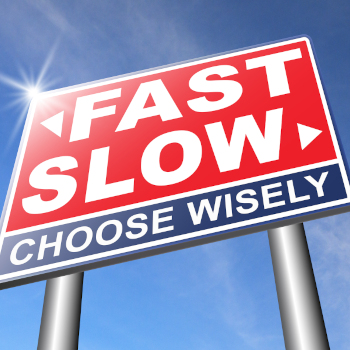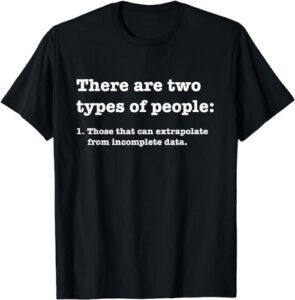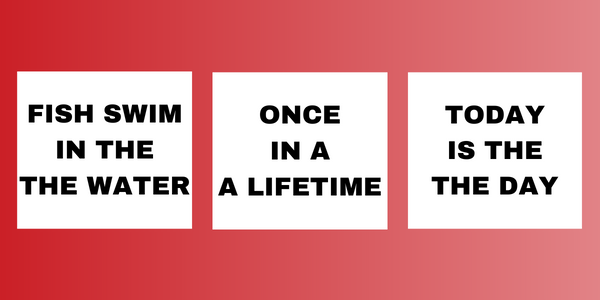
How Did a Ball, a Bat, and a Little Math Expose the Secrets of Your Brain?
 There seem to be two types of people in this world. No, not Democrat vs Republican. Not those who believe aliens exist and walk among us vs those who don’t. And certainly not Red Sox vs Yankees (boo). But rather, people who believe they’re rational vs those who see themselves as emotional. We all want to believe we are the former rather than the latter, but the evidence begs to differ.
There seem to be two types of people in this world. No, not Democrat vs Republican. Not those who believe aliens exist and walk among us vs those who don’t. And certainly not Red Sox vs Yankees (boo). But rather, people who believe they’re rational vs those who see themselves as emotional. We all want to believe we are the former rather than the latter, but the evidence begs to differ.
I mean, I know we all like to believe we can gather a little information and understand the whole shebang. Take, for instance, one of my favorite shirts. It reads:
There are two types of people in the world:
- Those who can extrapolate from incomplete data.
If you’re rereading that and wondering if the Zeigarnik effect is at play, don’t worry, you’re not alone – at least judging by the expressions I usually see on people’s faces. If you are number two and want your own shirt to share the message, get it here.
The bottom line is our brains are built to process information through two distinct ‘systems.’ In his book ‘Thinking Fast and Slow,’ Daniel Kahneman, a Nobel Prize-winning psychologist, differentiates these two systems as ‘System 1’ and ‘System 2.’ System 1 is related to our fast, instinctive, and emotional decision-making process, while System 2 is slower, more deliberate, and logical.
“‘Okay, that’s great, but what are some examples?’ you might ask.”
Well, one thing I promised myself when I set out to write my blog was that there wouldn’t be any Algebra II, but in this case, there is some math involved. Let’s look at this example from the book, adjusted for inflation of course:
If a bat and a ball cost $1,100 and the bat costs $100 more than the ball, what does the ball cost?
Hold that answer for a minute.
What is 3 x 3?
I’m confident that if you’re reading this blog, you answered correctly. But just to ensure no one feels left out, the answer is 9.
Now, let’s look at something more visual, but I need you to follow the instructions exactly as they are written and highlighted.
Look at this image and read each box from left to right.

Did you hear anything that sounded strange? Did you happen to notice the word “the” twice in the first box? If not, you probably aren’t alone, because our brains often work ahead and automatically fix some errors.
Now, look at this image and read each box out loud from right to left.

Did you hear anything different? I bet this time you picked up on all the errors in the boxes.
What is the difference between the two images and their specific instructions? The first set of instructions were simple and part of our normal process, thus allowing ‘System 1’ to take over, which may have caused you to overlook some of the errors in the boxes. However, the second set of instructions contained additional directions and asked us to do something counter to our normal process. This naturally makes our brains slow down, or engage in ‘System 2,’ allowing us to spot all the errors.
Now that we have a little background on these two ‘systems,’ let’s identify how marketers use them.
System 1: We are all aware of how marketers try to appeal to our emotions. They use emotionally charged ads, stories, and visuals to draw us in. They aim to create an immediate and powerful emotional connection with their products or brands.
System 2: This is where marketers hope our rational brain will recognize the logical reasons to buy their products or services. They focus on emphasizing the quality, the value for the dollar, the product or service’s unique features, or the benefits of using them.
Is it possible to use both System 1 and System 2 marketing simultaneously? Absolutely! Marketers often use framing choices to present products or services to clients and customers. For example, they can set a higher-priced product next to a cheaper one to make the cheaper one seem like a better deal (engaging System 1’s quick judgements), while providing detailed product comparisons to help consumers make more thoughtful choices (engaging System 2’s deliberative process).
If you are a marketer, remember, you must find the right balance and blend both approaches to engage both systems effectively, depending on the specific objectives of your marketing strategy and the nature of your product or service.
Till next time.
PS. I will give you the answer to the ball and bat question next week. I don’t want to ruin it for anyone.

This is an excellently written blog and I really do enjoy reading your intelligent and insightful posts!!
your wife
Whew! That was close. I wasn’t sure my wife was reading my blog.
Red Whiskey Team